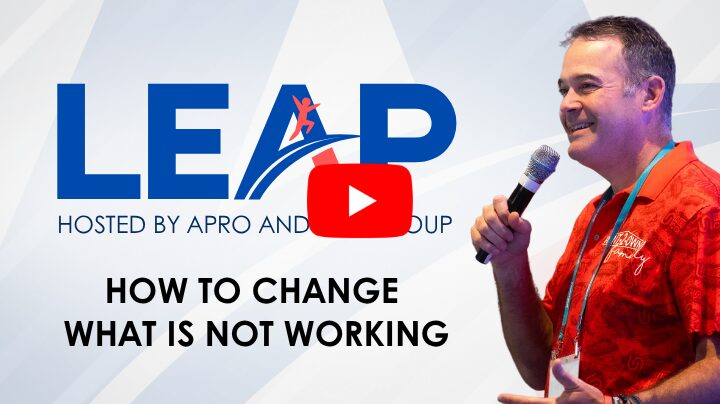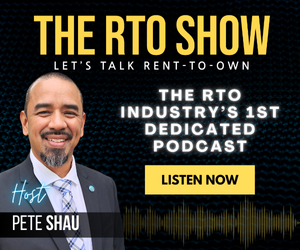Change is never theoretical in rent-to-own (RTO) – it shows up in daily sales numbers, customer interactions, and store traffic that looks nothing like it did just a few years ago. During LEAP Session 10: How to Change What is Not Working, APRO member Countryside Rentals Inc. dba Rent-2-Own Owner Mike Tissot unpacked how to recognize what is stuck in your business and reset it for real growth, drawing heavily from Dan Heath’s book Reset: How to Change What’s Not Working.
Instead of treating change as a slogan, the session grounded it in one urgent goal: renting more TVs, sofas, washers, and dryers in 2025’s reality. That meant getting honest about outdated habits, rethinking the sales process, and focusing leadership energy where it will actually move the needle.
RTO Change Management Strategies in the Sales Process
A core theme of the webinar was that you cannot have growth without change – and you cannot have change without clarity. Tissot highlighted leadership expert John Maxwell’s “Five Cs of Change”: communication, commitment, culture, capability, and clarity. In many RTO stores, capability and clarity are the weak links. Team members are told to “get more sales” without really understanding how, or what “good” looks like in today’s market.
That is where one of the most practical RTO change management strategies comes in: finding the leverage point. Tissot shared a 12-part list of sales activities – from outbound calls and Facebook marketing to CRM activity, lost customer visits, delivery leads, and overall salesmanship. The challenge for leaders is to identify which one or two of those activities, if improved, would create the biggest impact right now. Change is not about doing everything – it is about pushing the right part of the system hard enough to get the boulder rolling.
Identifying the Real Constraints Inside Today’s RTO Stores
To find that leverage point, leaders have to “get low to know.” That means riding along on deliveries, making lost customer visits, and personally working CRM lists, not just directing from a distance. When managers took back 100 lost customers themselves, the results ranged from just a few returns to remarkable wins – revealing who really understood today’s sales work and what tactics actually converted.
Another key idea was “studying the bright spots.” Instead of relying on monthly averages, Tissot urged attendees to dissect the outliers – the 18-rental Thursday, the huge Black Friday, the unexpected surge from a single product promotion. One standout example: a manager who put a 75″ TV on a special weekly rate and called customers about that one product. The day turned into an 18-rental outlier, not because of the discount alone, but because leading with product sparked interest and conversation.
Restacking Resources to Drive Meaningful Change
After mapping the system and finding constraints – from approval bottlenecks to inconsistent rules between account managers and salespeople – the next step is to “restack the resources.” Tissot emphasized starting change with a burst: concentrated hours of focused effort, not just checking the box on a daily call quota or a single Facebook post. When his team launched Home Shopping Live on Facebook, they did it with multiple live product segments throughout the day, establishing new habits and proving the channel could produce meaningful sales.
Restacking also means recycling wasted time. One major opportunity: pairing deliveries or collection trips with lost customer visits and lead generation. Tissot shared how a delivery team member now regularly returns from the field with specific leads – a future matching refrigerator, tire sizes for an upcoming rental, and more – captured in the moment and fed straight into the CRM for follow-up.
Finally, effective RTO change management strategies hinge on motivation and ownership. Tissot encouraged leaders to celebrate activities and trajectory – not just end results – and to give teams “guarded autonomy.” Within clear guardrails, sales and store staff should have the freedom to make offers, price within limits, and test ideas. When people help design the change, they are far more likely to sustain it.
LEAP Session 10 ultimately framed change not as a one-time initiative, but as an ongoing reset: find the leverage point, restack resources around it, and keep refining as the business and customer behavior evolve. For RTO leaders ready to move beyond talk and into action, this session offers a playbook worth revisiting – and rewatching with your entire team.
Watch the Full LEAP Session
Watch the full LEAP session replay – brought to you by the Association of Progressive Rental Organizations (APRO) and TRIB Group.









